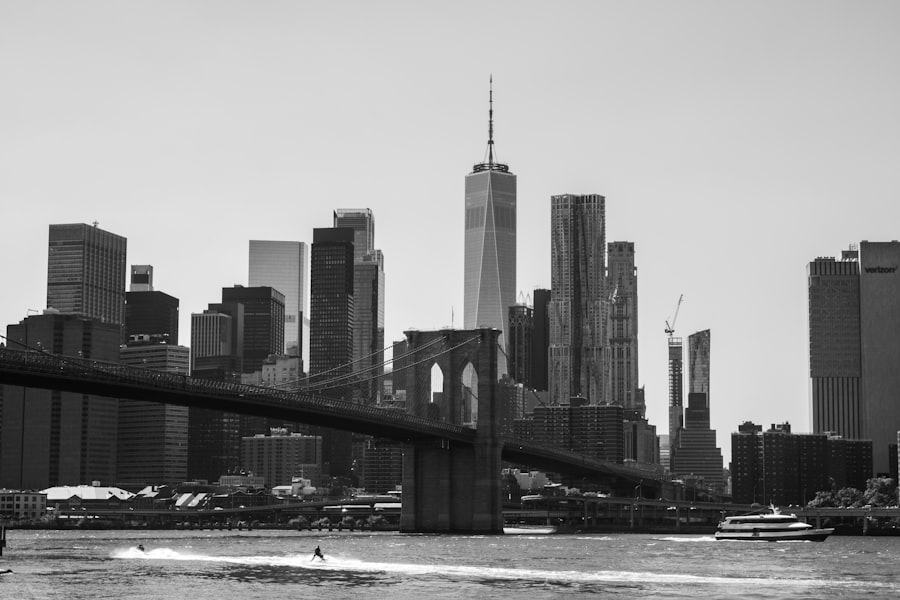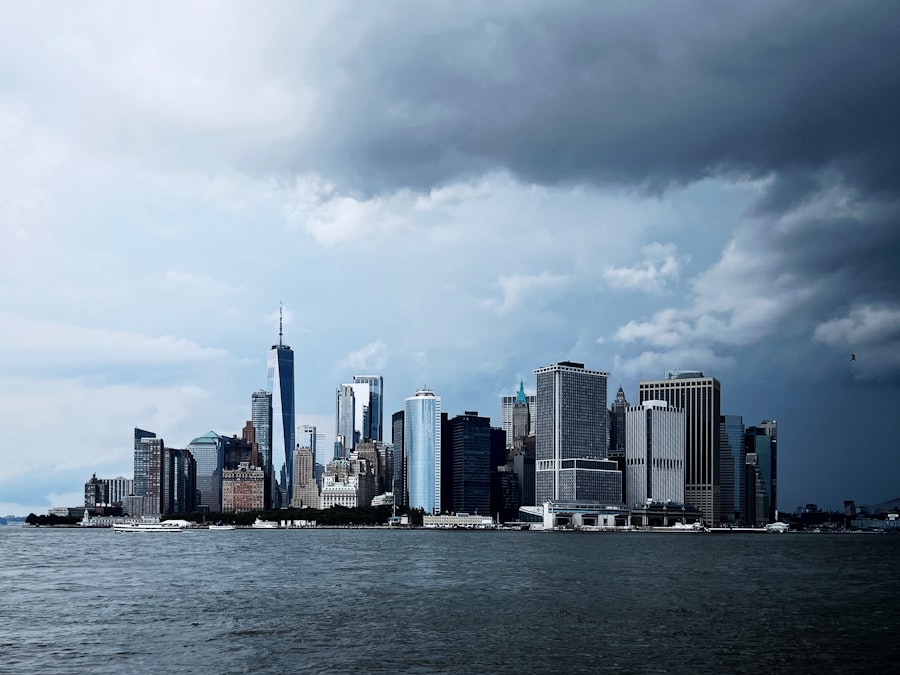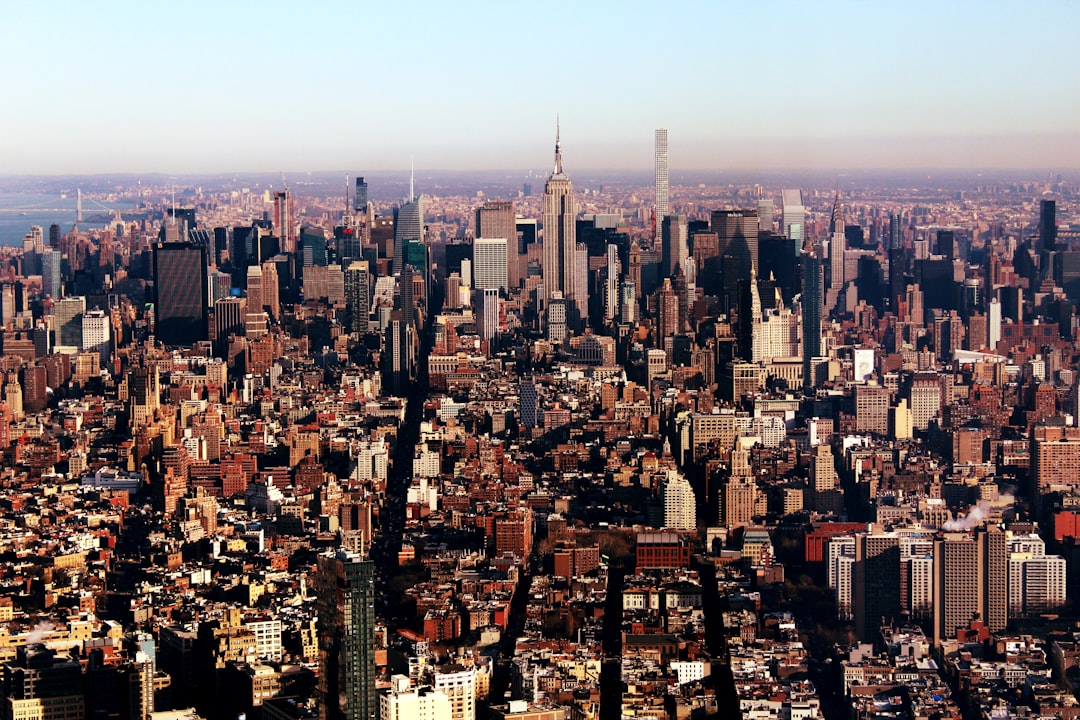New York City, often heralded as a global hub of culture, finance, and innovation, is also a stark representation of economic disparity. The city boasts some of the wealthiest individuals and corporations in the world, yet it simultaneously grapples with high poverty rates and a significant portion of its population living paycheck to paycheck. This juxtaposition creates a complex landscape where affluence and deprivation coexist, leading to a growing divide that affects the social fabric of the city.
The economic disparity in New York is not merely a statistic; it is a lived reality for millions of residents who navigate the challenges of an increasingly polarized economy. The implications of this economic divide extend beyond mere financial statistics. They influence access to education, healthcare, housing, and employment opportunities.
As the gap between the rich and the poor widens, the very essence of what it means to live in New York is called into question. The city’s identity, once characterized by its diversity and opportunity, is now overshadowed by the stark realities of inequality. Understanding the roots and ramifications of this economic disparity is crucial for addressing the challenges that lie ahead.
Key Takeaways
- Economic disparity in New York City has deep historical roots and continues to grow, impacting communities both within and outside of the city.
- Gentrification plays a significant role in widening the economic gap, leading to displacement and inequality in housing and resources.
- Government policies have contributed to economic inequality in New York, but there are ongoing efforts to address this issue and support marginalized communities.
- The relationship between education and economic inequality in New York is complex, with access to quality education being a key factor in addressing the growing divide.
- The future of economic disparity in New York will depend on the effectiveness of policies and initiatives aimed at reducing inequality and promoting economic opportunity for all residents.
Historical Context of Economic Inequality in New York
To comprehend the current state of economic inequality in New York City, one must delve into its historical context. The city has long been a melting pot of cultures and economic classes, with waves of immigrants contributing to its growth and diversity. However, this influx has also led to cycles of economic boom and bust, often leaving marginalized communities behind.
The industrial revolution in the late 19th century marked a significant turning point, as factories and industries flourished, creating jobs but also fostering harsh working conditions and low wages for many laborers. The Great Depression further exacerbated these inequalities, as unemployment soared and social safety nets were virtually nonexistent. In the post-World War II era, New York experienced a period of economic expansion that brought prosperity to many but also laid the groundwork for systemic disparities.
Urban renewal projects in the mid-20th century often displaced low-income communities, while affluent neighborhoods continued to thrive. This historical backdrop sets the stage for understanding how past policies and societal shifts have contributed to the entrenched economic divides seen today.
Factors Contributing to the Growing Economic Divide

Several factors have converged to exacerbate economic inequality in New York City over recent decades. One significant contributor is the rapid rise of the technology and finance sectors, which have created high-paying jobs but have also led to a concentration of wealth among a select few. As these industries flourish, they attract talent from around the globe, driving up housing costs and pushing lower-income residents further from the city center.
The influx of highly skilled workers has created a demand for luxury housing and amenities that often cater exclusively to the affluent. Additionally, systemic issues such as racial discrimination and unequal access to education play a critical role in perpetuating economic disparities. Communities of color frequently face barriers that limit their opportunities for upward mobility.
This cycle of disadvantage reinforces existing inequalities and makes it challenging for individuals from marginalized backgrounds to break free from poverty.
Impact of Economic Disparity on New York City
| Metrics | Data |
|---|---|
| Median Household Income | 64,987 |
| Poverty Rate | 19.5% |
| Income Inequality Index | 0.499 |
| Unemployment Rate | 4.1% |
| Homelessness Rate | 0.47% |
The impact of economic disparity on New York City is profound and multifaceted. One of the most visible consequences is the stark contrast in living conditions across different neighborhoods. While areas like Manhattan and parts of Brooklyn are characterized by luxury apartments and high-end retail, other neighborhoods struggle with inadequate housing, food insecurity, and limited access to healthcare services.
This spatial segregation not only reflects economic divides but also perpetuates social isolation among different groups. Moreover, economic inequality has significant implications for public safety and social cohesion. High levels of poverty can lead to increased crime rates, as individuals facing financial desperation may resort to illegal activities as a means of survival.
Additionally, the growing divide fosters resentment and tension between different socioeconomic groups, undermining community trust and collaboration. As New Yorkers navigate these challenges, the need for comprehensive solutions becomes increasingly urgent.
The Role of Gentrification in Widening the Economic Gap
Gentrification has emerged as a contentious issue in discussions about economic disparity in New York City. As neighborhoods undergo revitalization and attract new investments, long-time residents often find themselves priced out of their homes. The influx of wealthier individuals can lead to rising rents and property values, making it difficult for lower-income families to remain in their communities.
This process not only displaces residents but also erodes the cultural fabric that has defined these neighborhoods for generations. While proponents argue that gentrification brings much-needed investment and improvements to infrastructure, critics highlight its detrimental effects on vulnerable populations. The displacement caused by gentrification can lead to increased homelessness and social fragmentation, as communities lose their historical ties and support networks.
As New York continues to evolve, finding a balance between development and preserving affordable housing becomes essential to mitigating the widening economic gap.
Government Policies and Economic Inequality in New York

Government policies play a crucial role in shaping the landscape of economic inequality in New York City. Over the years, various initiatives have been implemented to address these disparities; however, their effectiveness has often been called into question. For instance, affordable housing programs have struggled to keep pace with rising demand, leaving many low-income families without viable options.
Additionally, tax policies that favor wealthy individuals and corporations can exacerbate existing inequalities by diverting resources away from essential public services. Moreover, social safety nets such as welfare programs have faced significant cuts over the years, further straining low-income households. The lack of comprehensive policies aimed at addressing systemic issues contributes to a cycle of poverty that is difficult to escape.
As policymakers grapple with these challenges, there is an urgent need for innovative solutions that prioritize equity and inclusivity in economic development.
Efforts to Address Economic Disparity in New York
In response to the growing economic divide, various organizations and community groups have mobilized to advocate for change in New York City. Grassroots movements focused on affordable housing, workers’ rights, and equitable education have gained momentum in recent years. These efforts aim to raise awareness about the impact of economic inequality and push for policies that promote social justice.
Additionally, some local government initiatives have sought to address disparities through targeted investments in underserved communities. Programs aimed at increasing access to quality education, job training, and healthcare services are essential components of a comprehensive strategy to combat economic inequality. However, sustained commitment from both public officials and private stakeholders is necessary to ensure that these efforts yield meaningful results.
The Effects of Economic Disparity on Communities Outside of New York City
While much attention is focused on New York City itself, the effects of economic disparity extend beyond its borders. Many surrounding areas experience similar challenges related to income inequality and lack of access to resources. As individuals migrate from rural or suburban regions seeking better opportunities in the city, they often leave behind communities grappling with declining economies and limited prospects.
The ripple effects of urban economic disparity can strain neighboring regions as well. Increased demand for affordable housing in urban centers can lead to rising prices in adjacent areas, pushing low-income families further away from their jobs and support systems. This interconnectedness highlights the need for regional approaches to addressing economic inequality that consider both urban and suburban dynamics.
The Relationship Between Education and Economic Inequality in New York
Education serves as both a pathway out of poverty and a reflection of existing inequalities within society. In New York City, disparities in educational quality are starkly evident across different neighborhoods. Schools in affluent areas often receive significantly more funding than those in low-income communities, resulting in vast differences in resources available to students.
This inequity perpetuates cycles of disadvantage, as children from underfunded schools may struggle to compete academically with their more affluent peers. Furthermore, access to higher education remains a significant barrier for many low-income students. Rising tuition costs and limited financial aid options can deter aspiring college students from pursuing their dreams.
As education becomes increasingly tied to economic success, addressing these disparities is crucial for fostering a more equitable society where all individuals have an opportunity to thrive.
The Future of Economic Disparity in New York
Looking ahead, the future of economic disparity in New York City remains uncertain. As the city continues to evolve amidst changing demographics and economic landscapes, addressing inequality will require innovative thinking and collaborative efforts across sectors. The ongoing impacts of climate change, technological advancements, and shifts in global markets will further complicate efforts to bridge the economic divide.
However, there is also potential for positive change as awareness grows around issues of equity and social justice. Community engagement and advocacy can drive meaningful reforms that prioritize inclusivity and sustainability in economic development strategies. By fostering collaboration among government agencies, businesses, and community organizations, New York City can work towards creating a more equitable future for all its residents.
Addressing the Growing Economic Divide in New York
In conclusion, addressing the growing economic divide in New York City requires a multifaceted approach that acknowledges historical context while actively working towards systemic change. The interplay between gentrification, government policies, education disparities, and community efforts underscores the complexity of this issue. As New Yorkers confront these challenges together, there is an opportunity to reshape the narrative around economic inequality into one that prioritizes equity and inclusivity.
Ultimately, fostering a more equitable society will not only benefit those who are currently marginalized but will also enrich the entire city by promoting social cohesion and shared prosperity. By recognizing the interconnectedness of these issues and committing to collaborative solutions, New York City can strive towards a future where opportunity is accessible to all its residents—regardless of their socioeconomic background.
This issue is further explored in a related article on MyGeoQuest, which delves into the geographical factors contributing to economic inequality in urban areas. The article provides insights into how location and access to resources can significantly impact economic opportunities and outcomes. For more detailed information, you can read the full article on MyGeoQuest’s website.
WATCH THIS! The Real Cost of NYC Living: Your Wallet, Sanity, and Subway Survival Skills
FAQs
What is economic disparity?
Economic disparity refers to the unequal distribution of wealth and income within a population. It can manifest in various forms, such as differences in wages, access to education, healthcare, and housing, as well as disparities in opportunities for economic advancement.
What are the causes of economic disparity in New York?
Economic disparity in New York can be attributed to various factors, including the concentration of wealth in certain industries, systemic inequalities in education and employment, housing segregation, and the high cost of living in urban areas.
How does economic disparity affect New York residents?
Economic disparity in New York can have far-reaching effects on residents, including limited access to quality education and healthcare, higher rates of poverty and homelessness, and reduced opportunities for economic mobility and upward social mobility.
What measures are being taken to address economic disparity in New York?
Efforts to address economic disparity in New York include initiatives to increase affordable housing, improve access to education and job training programs, raise the minimum wage, and promote economic development in underserved communities.
What are the long-term implications of economic disparity in New York?
Persistent economic disparity in New York can lead to social unrest, decreased economic productivity, and a widening gap between the wealthy and the rest of the population. It can also perpetuate cycles of poverty and limit overall economic growth.
